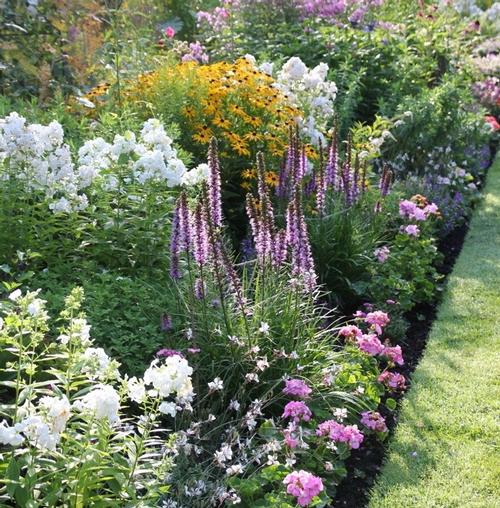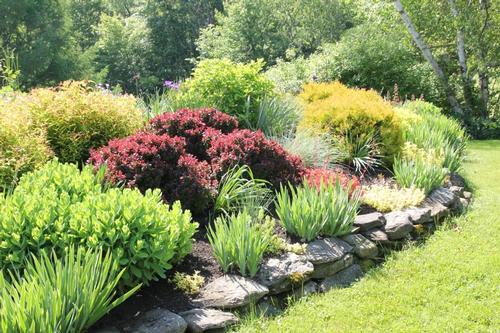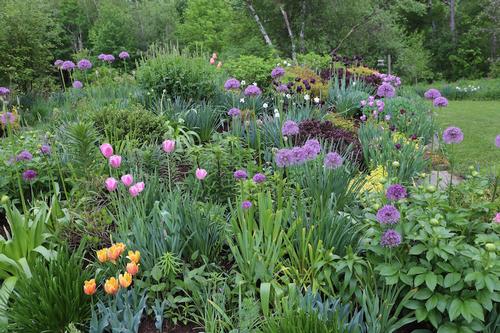6 TIPS FOR A MORE COLORFUL FLOWER GARDEN
Color and lots of it. That's what most of us want from our flower gardens. We are looking for wave after wave of colorful blooms, with new flowers opening every week from spring through fall.
Experienced gardeners and garden designers know this isn't as easy as it sounds. Plants bloom according to their own internal timeclocks. To have a garden that is consistently colorful, we need to work with our plants and understand their natural tendencies. Here are some tips to help you manage your own cast of characters and get them to put on a show that will delight you all season long.

Choose Plants With Different Bloom Times
Most people shop for perennials during May or early June, and the most popular plants are the ones that are already in bloom. This means most perennial gardens are filled with early summer flowers such as bleeding heart, peonies, iris and Asiatic lilies. If you want color in mid to late summer, make sure your garden also includes plants such as rudbeckia, sedums, asters and ornamental grasses.

Mix Annuals with Perennials
Combining annuals with perennials makes it easier to keep the color going strong. Most perennials bloom at a certain time during the season – peonies in May, delphiniums in June, phlox in July. Annuals, on the other hand, bloom steadily all season long, especially if you remove the spent flowers. Not all annuals make good companions for perennials (petunias for example) but many do, including heliotrope, nicotiana, verbena, salvia and cleome.

Focus on Foliage
Decorative leaves can be just as ornamental as flowers and they maintain their good looks throughout the growing season. The tropical foliage of summer bulbs such as canna lilies, caladiums and calla lilies add pizazz to perennial gardens. Hostas, heucheras and ajuga can keep both gardens and containers colorful. And don’t forget about coleus. They are as effective in garden beds as they are in pots and planters.

Add Shrubs For Four-Season Interest
Shrubs add structure to flower gardens and can also provide flowers, berries and interesting foliage. Good perennial garden companions include dwarf azaleas and lilacs for springtime blooms, buddleias, clethera and shrub roses for summer flowers, fothergilla, hydrangeas and Japanese maples for fall, and winterberry, Siberian dogwood and witchhazel for winter interest.

Stretch the Color with Bulbs
Planting daffodils, tulips, muscari and other spring-flowering bulbs will fill your garden with color long before your neighbors' gardens are in bloom. Plan to continue the show right through October by adding summer-flowering bulbs such as dahlias, elephant ears, caladiums and eucomis. These heat lovers grow vigorously in summer heat and are at their best as summer turns to fall.

Primp and Prune As You Go
Make a habit of keeping a pair of scissors or a small hand pruner in your pocket. Removing spent flowers and cutting back lanky foliage helps gardens stay tidy and focuses attention on what looks good rather than what doesn't. Deadheading encourages annuals to keep flowering and will sometimes get perennials, such as achillea, campanula, dianthus and phlox to bloom again. For many perennials, a mid-season haircut will stimulate a fresh flush of foliage. It's a great technique for perennial geraniums, nepeta, lady’s mantle and coreopsis.


